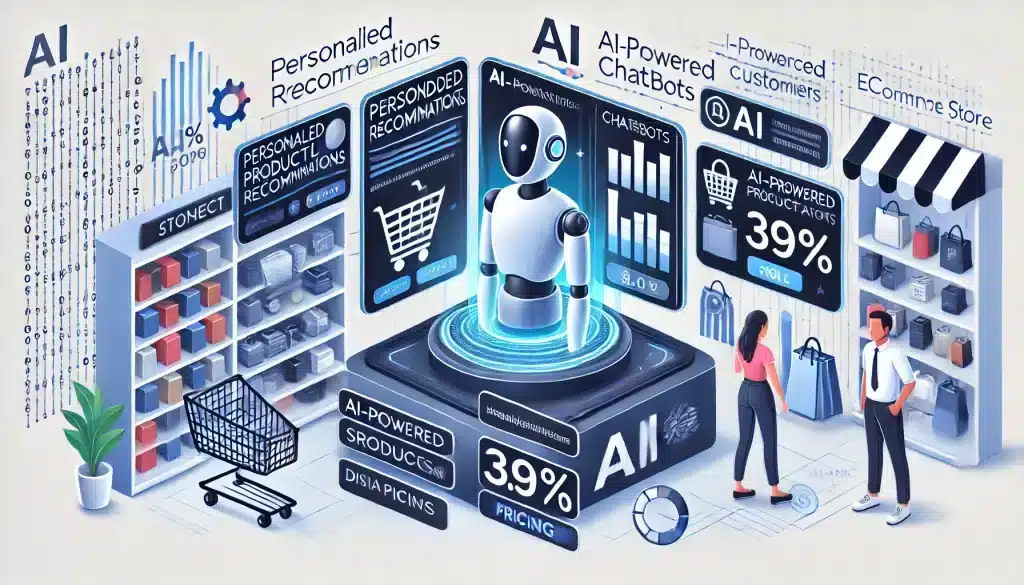The ever-increasing usage of artificial intelligence and emotion recognition technologies is changing the marketing landscape. In today’s business scenario, creating experiences that hold meaning for the target audience has become crucial. Emotion recognition becomes an important part of these strategies because it can analyze and respond to human emotions. This report explores several aspects including the role of AI in emotion recognition; applications of AI for marketing; emerging trends; implementation strategies; and the ethical concerns associated with this novel approach.
What is Emotion Recognition and How Does AI Come in?
Understanding Emotion Recognition Systems
This comprises the technological ability to identify and analyze human emotions from various cues, such as facial expressions, voice modulation, and text sentiment analysis. The key to recognition systems relies on applying judicious, advanced algorithms and data analytics to interpret emotional states accordingly. They can understand the emotional signals that are coming from people through methodologies like facial expression recognition and speech-emotion recognition. These understandings are important for tailoring marketing efforts so that compelling customer experiences can be created.
The Role of AI in Emotion Detection
Artificial intelligence may be used to analyze emotional data for more advanced emotion detection systems. AI can discern hidden patterns of human emotions or behaviors through machine learning and natural language processing. Advanced multimodal emotion recognition, capable of providing insights about visual as well as auditory data at the same time, is a further possibility with the emergence of emotional AI. This is a multi-dimensional approach, crossing the boundary between human emotional recognition and the potential for automation of AI, and so hence, more productive marketing campaigns.
How AI Can Interpret Human Emotions
The design of AI machines includes the ability to read human emotions by detecting the emotional states and contextual information. With AI recognizing models, learning human emotions in real-time, and understanding how to reply, it can market the message toward that emotion, for instance, happiness and sadness through facial expression analysis. It can help enhance consumer engagement by allowing AI to read human emotions and, from such a view, allow businesses to address mental health concerns by making them aware of how the company can support them along the way when necessary.
What Are the Applications of Emotion Recognition AI in Marketing?
Personalizing Customer Experiences
Personalization of customer experiences is the biggest application of emotion recognition AI in marketing. This allows brands to advertise specific feelings their audience has at the moment, as understood by the analysis of emotions by AI. For instance, if an AI catches a customer feeling joyful, then a client can expose the person to promotional offers or products that best go with the positive emotional state. This degree of personalization should lead to further relationship ties between brands and consumers, thus increasing customer loyalty.
Enhancing Advertising Strategies with Emotion Detection
Emotion detection certainly will enrich the advertising strategy of brands because they can create messages that evoke certain emotional reactions from audiences. Marketers can manage their advertising activities by predicting how consumers will respond to campaigns in grasping such emotional cues. For instance, an advertisement that creates excitement may prove to be more useful for a product launch campaign, and a message that conveys empathy somehow relates to a social cause. This strategic use of emotional AI will allow businesses to reach out to their audience in a more effective way, thus triggering a lot of conversion rates.
Using AI for Real-Time Customer Feedback
Another application of AI-based systems for emotion recognition is collecting real-time customer feedback through them. From constant observation of how customers respond through conversations on social media, through engagement on the website, and even in terms of call handling, businesses obtain the fullest extent of insights into consumer opinion. This immediate loop of feedback therefore enables brands to change strategies and move accordingly based on the dynamically changing needs of customers. For example, if a customer is extremely frustrated while undergoing an interaction process, the AI may raise an alert to customer service to intervene and lower his experience and retain or build brand loyalty.
What is the Future of Emotional AI in Marketing?
Trends and Innovations in Emotion Recognition Models
The future of emotional AI in marketing is bright, with ongoing trends and innovations shaping its trajectory. As the research in AI goes ahead, we can look forward to seeing more complex models of emotion recognizers, making use of deeper learning techniques, and offering better accuracies in human emotion detection. Such innovations will boost the capabilities of AI systems to better analyze the vast diversity of emotional expressions and contexts. This integration of affective computing will therefore be a further step in the direction toward machines understanding and responding to humans’ emotions, which will eventually change the face of marketing.
The Impact of Generative AI on Emotion Detection
Generative AI is a paradigm in emotion detection that can create through generative models a very realistic simulation of how someone might respond emotionally to certain stimuli. Because of this, marketers can foresee what their audience would react to in response to different advertising strategies. Additionally, with further advancement in generative AI, research might be able to create marketing content that stands out uniquely by emotional states in consumers, driving higher engagement and success.
Predictions for Emotion AI in Consumer Engagement
As emotional AI continues to grow even bigger, the near future of consumer engagement is becoming more personalized and, most importantly, emotionally driven. In the future when brands would use emotion recognition to deliver an immersive experience with consumers on a whole new level, you will see campaigns responding in real-time audience response as well as personalized recommendations to individual emotional states. In the end, the idea is to establish relevant relationships between brands and consumers such that the prospects of getting more satisfied customers and loyalty are much enhanced.
How Can Businesses Implement Emotion Recognition Systems Effectively?
Choosing the Right Emotion Recognition AI Tools
To effectively implement emotion recognition systems, businesses will have to choose the appropriate AI tools to suit their aims. The kind of emotional data that should be analyzed, the desired outcomes, and integration capabilities with existing marketing platforms are some of the factors that businesses have to consider while choosing these tools. An organization may opt for holistic solutions that incorporate facial expression recognition, speech emotion recognition, and text sentiment analysis to understand consumer emotions in a very comprehensive way.
Integrating Emotion Detection into Marketing Strategies
Emotion detection therefore needs to be implemented carefully into the marketing strategy. A business will, therefore, need to have a framework for how their emotional data will guide their decision-making processes from ad placements down to the nature and type of content they create. By applying AI to analyze customers’ interactions and their resultant emotional responses, companies can continuously refine their marketing strategies as it will ensure that they stay relevant and impactful in an ever-changing digital landscape.
Training Staff to Utilize Emotion AI Systems
Finally, training employees effectively to use emotional AI systems is crucial to maximize their benefits. Organizations must build training programs for employees, which would teach them how to interpret emotional data, derive insights from it toward the enhancement of strategic decision-making, and resolve all ethical concerns about emotion recognition. This facilitates the development of an emotional intelligence culture within the workforce, enabling organizations to effectively leverage the potential of emotional AI in their marketing initiatives.
What Are the Ethical Concerns Surrounding AI and Emotion Recognition?
Privacy Issues in Emotion Data Collection
The collection of emotional data raises serious privacy concerns as more businesses adopt emotion recognition technologies. Customers’ concerns about data security and permission are likely to arise from their fear of being watched and their emotional states being analyzed. Companies must be open and honest about these matters by outlining exactly what data they get, how they get it, and how they plan to preserve consumer information.
Addressing Bias in Emotion Recognition Models
Discrimination in models to recognize emotions would be another ethical concern. When these systems are trained on non-representative datasets, they may misunderstand or overlook certain emotional cues, leading to inaccurate conclusions. To ensure that every consumer feels appreciated and understood, continual efforts to diversity training data and validate emotion recognition across various demographics are also part of the effort to combat bias.
Ensuring Transparency in AI Emotion Detection
Building trust with customers demands transparency of AI emotion detection. Organizations should attempt to explain, at each point in time, how their emotion recognition systems work, the types of data gathered, and the usage of this information. An open conversation about emotional AI would alleviate many ethical concerns surrounding business and reaffirm responsibility in marketing.




